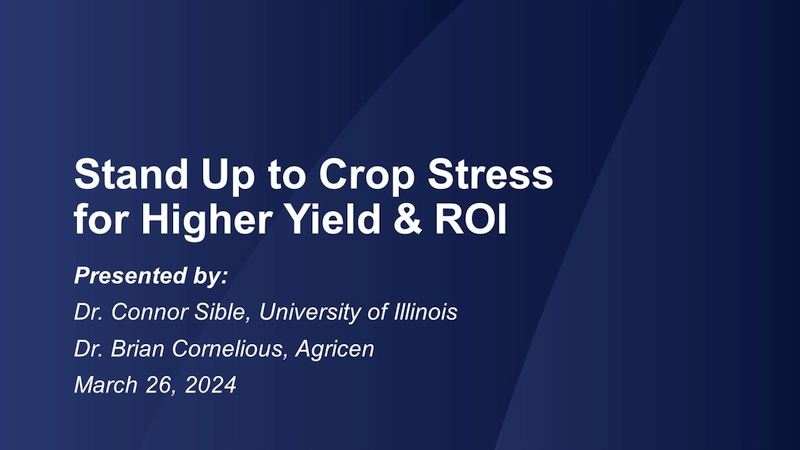Key Factors Impacting Herbicide Injury To Corn
During the past week, the number of observations and inquiries related to corn injury from herbicides increased, said University of Illinois associate professor of weed science Aaron Hager.
Instances of corn injury appear to be fairly widespread across the state. Direct application of postemergence herbicides and persistence of herbicides applied last season appear to be responsible for much of the injury.
“Many postemergence corn herbicides routinely cause some corn injury,” said Hager. “Some growers, however, have the impression that this year there is a bit more injury than usual.”
Hager said that several factors can affect the sensitivity of corn to injury from postemergence herbicides, including:
- Hybrid: Hybrids have varying sensitivity to herbicides labeled for use in corn. For example, some corn hybrids are sensitive to specific ALS-inhibiting herbicides and tend to exhibit considerable injury following herbicide application. Many corn herbicide labels (especially labels of postemergence corn herbicides) carry warnings that certain corn hybrids could be sensitive to the active ingredient.
- Environmental conditions: High air temperatures and relative humidity levels favor rapid absorption of foliar-applied herbicides, but some environmental conditions can induce crop stress, slowing the rate at which the crops metabolize the herbicide and leading to increased herbicide-related injury. For example, cool air temperatures and wet soil can induce crop stress.
- Spray additives: Crop response may be enhanced when spray additives are applied with a postemergence herbicide or tankmix combination because of the increased rate of herbicide absorption into the plant. Be sure to read all label suggestions and precautions related to spray additives that should be either included or avoided when applying herbicides postemergence.
- Contamination: Herbicide residues from prior applications may be applied inadvertently with the postemergence corn herbicide. These residues, either alone or in combination with the postemergence corn herbicide, may enhance the amount of corn injury. The type of contaminant and the dose at which it is applied affect the severity of the corn response to spray contamination.
Soil residues of herbicides applied during the previous growing season (carryover) appear to be another source of corn injury. Herbicide persistence in the soil, and the rate of chemical or microbial degradation, are influenced by many factors, including the specific chemistry of the herbicide and edaphic factors.
The soil pH is a critical factor affecting the persistence and degradation of many herbicides, including sulfonylurea and triazine herbicides, because it affects the rate of chemical degradation via hydrolysis. High soil pH (7.0 or more) may slow the dissipation of certain herbicides by reducing the hydrolysis rate. Even when soil moisture is adequate, triazine and sulfonylurea herbicides degrade more slowly in soils with high pH.
Soil moisture also influences the efficacy and persistence of soil-residual herbicides. Populations and activity of soil microorganisms that are responsible for microbial degradation of herbicides are greatly reduced when soil moisture is limited. Moreover, more herbicide is adsorbed to soil colloids in dry soils, making it unavailable for plant uptake and degradation by soil microbial populations.
“The very dry soil conditions encountered during parts of the 2011 growing season likely slowed the degradation of some soil-residual herbicides, particularly those degraded by soil microorganisms,” said Hager. Dry soil conditions early in 2012 allowed for unusually early corn planting, which in some instances occurred before the end of the rotational interval of the herbicide used in 2011.
Hager said there have been several reports of corn injury that appear to be caused by fomesafen carryover. Veinal chlorosis or necrosis, which causes a striping effect on the leaves, is the most common of these symptoms.
“In some instances, the leaf veins almost appear clear or transparent, but the root system of affected plants usually shows no symptoms unless the foliar symptoms are extremely severe,” he explained.
Because of the fomesafen’s soil persistence and corn’s sensitivity to fomesafen residues, the labels of most products that contain it, including Flexstar, Flextar GT and Prefix, indicate a 10-month rotational interval for corn.






